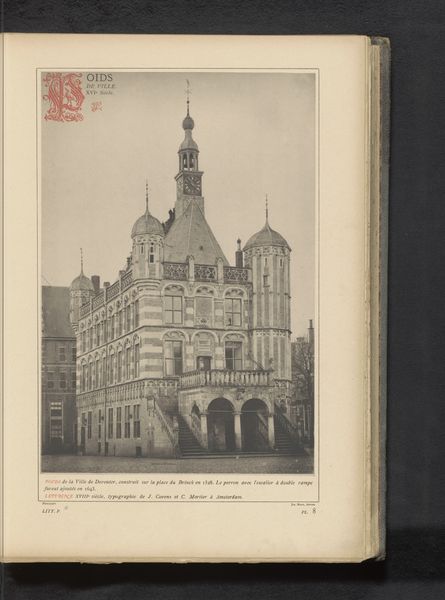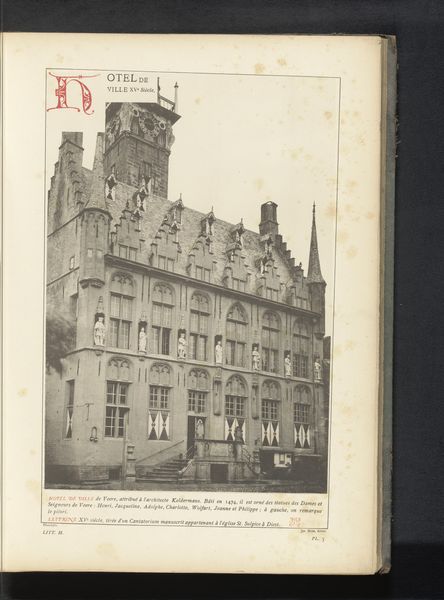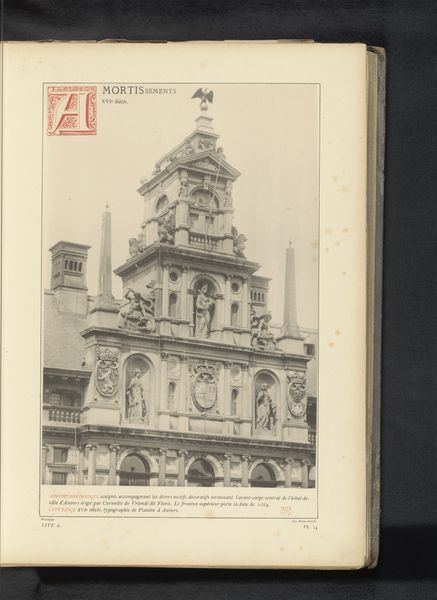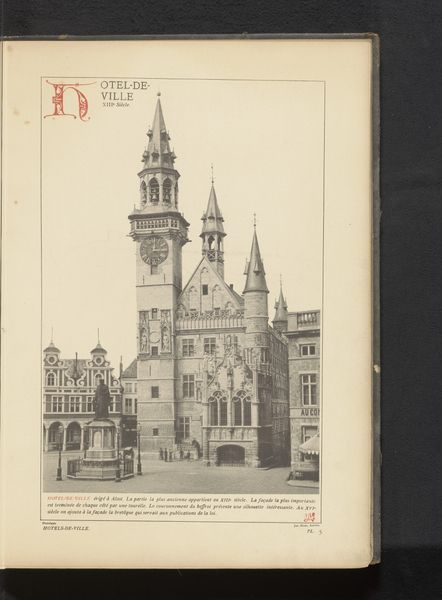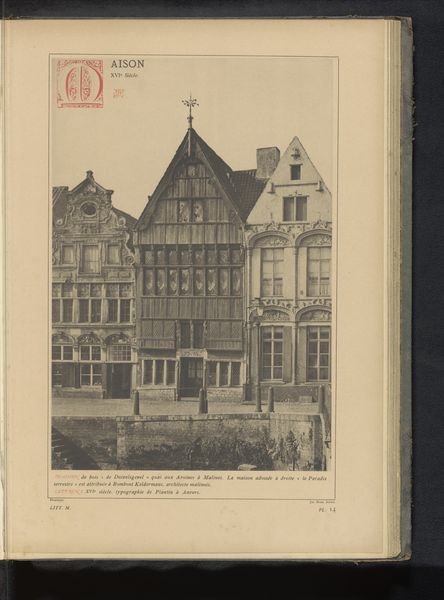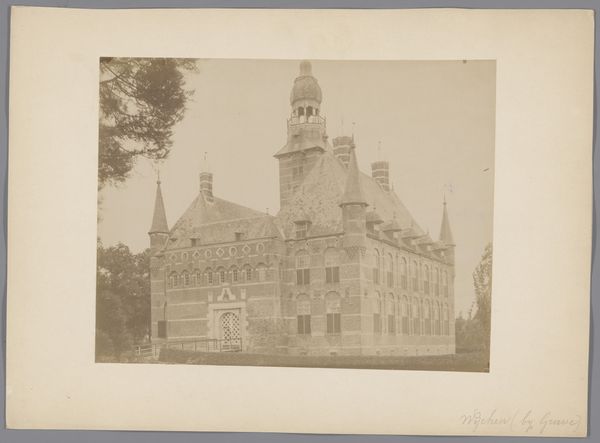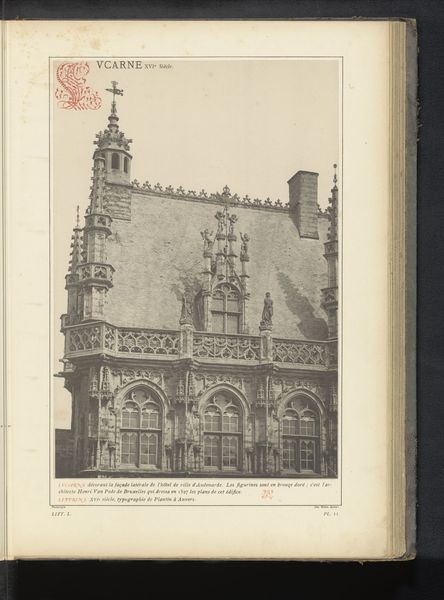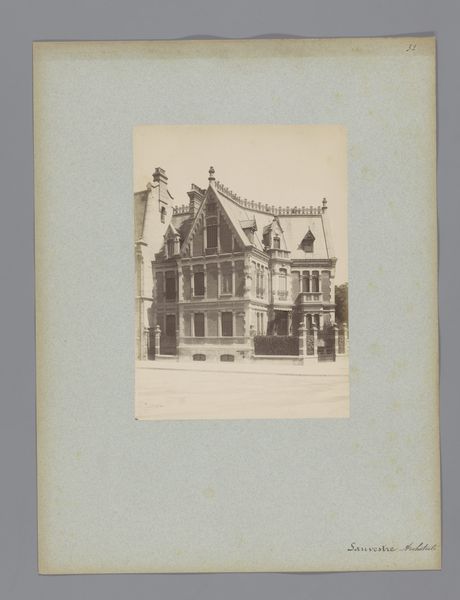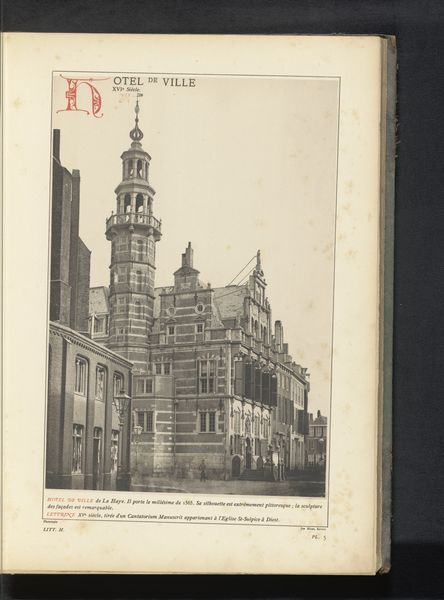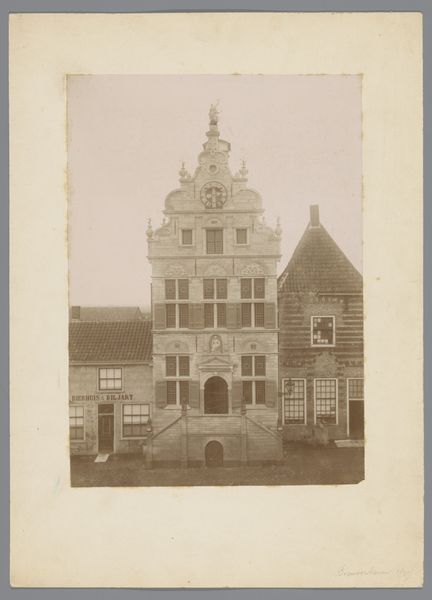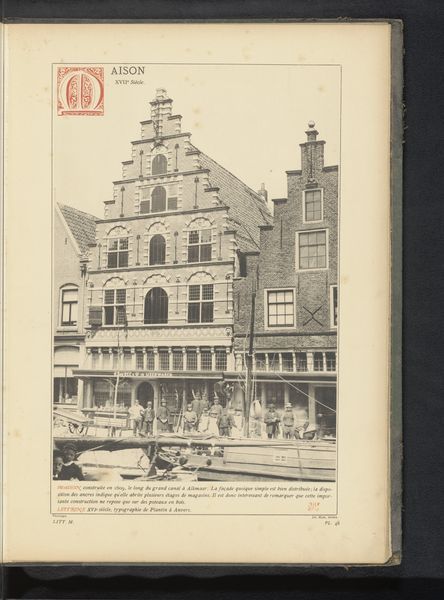
print, photography, site-specific, architecture
# print
#
landscape
#
photography
#
site-specific
#
architecture
#
realism
Dimensions: height 347 mm, width 235 mm
Copyright: Rijks Museum: Open Domain
Editor: Here we have “Gezicht op kasteel van Ooidonk,” a photograph dating to before 1889. It appears to be a print of the castle. It feels very formal and rigid to me, with the symmetrical architecture and stark photographic style. What catches your eye when you look at this work? Curator: The way this print documents the architecture, particularly the facade, directs my attention to the labor involved. Consider the quarries where the stone was sourced, the craftspeople who shaped and laid it, and the systems that organized their efforts. This wasn't just the construction of a building; it was a manifestation of social hierarchy and control, wouldn't you say? Editor: Absolutely, I see your point about the social dynamics reflected in the materiality and construction. How does photography factor into this equation? Curator: Well, think about photography's role in the 19th century. It’s not just about documentation. Photography like this becomes a tool for preservation, for disseminating an image of power. It solidifies the castle, its owners, and the values they represent as lasting entities. What choices were made about lighting, about framing? How do those choices influence our interpretation? Editor: That's fascinating; I never considered the implications of photography in that context. It makes me think about how these kinds of images become commodities themselves, reinforcing social structures through consumption. Curator: Exactly. It encourages us to challenge these boundaries. This challenges the traditional boundaries of art by looking at not only the craftmanship, labor and consumption. Hopefully we both walk away today having new knowledge and perspective on art.
Comments
No comments
Be the first to comment and join the conversation on the ultimate creative platform.
